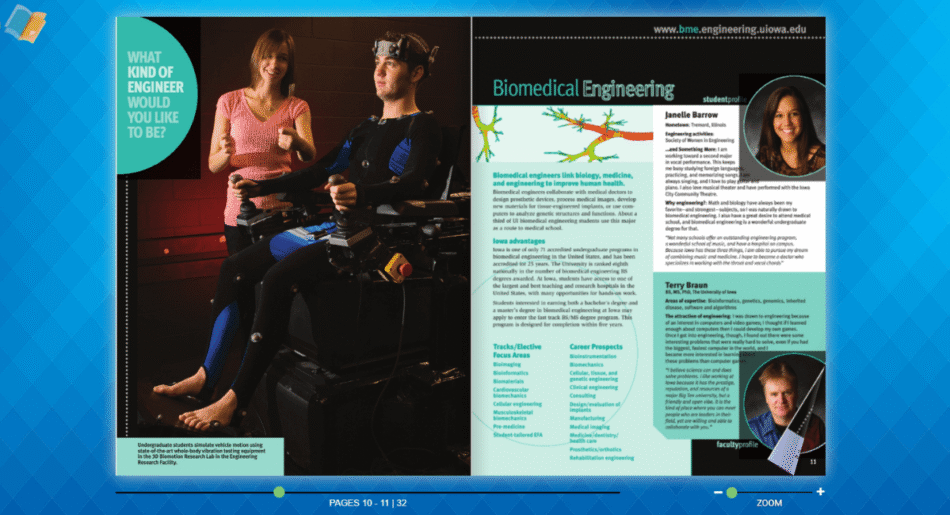Digital publishing has changed radically in the last ten years, with static PDFs being replaced by more interactive, richer forms of content. Among these developments, flipping book software is a groundbreaking technology that’s revolutionizing the way we produce, read, and engage with digital publications. The technology revolutionizes regular documents into engaging, page-turning experiences that capture the sensory pleasure of reading books while providing increased digital capabilities.
Flipping or flip book software is therefore a mighty tool that fills the gap between conventional publishing and contemporary digital needs as publishers, marketers, and content developers look for means to capture and sustain audiences’ attention.
The Evolution of Digital Publishing
Digital publishing started out as straightforward PDF files that mimicked printed materials in a digital format. Though effective, these static formats were often cold and did not take advantage of engaging readers.
The advent of e-readers brought some advancements, but the experience still was predominantly text-driven and linear.
The need for more engaging and visually rich digital content has ballooned. Today’s audiences demand multimedia integration, social share functionality, and mobile optimization. These new expectations have generated a perfect storm for innovative tools such as flipping book software to emerge and flourish.
Conventional digital formats are subject to various limitations which flipping book software overcomes:
Static Presentation: PDFs and traditional e-books present limited visual appeal or interactivity, rendering them less captivating for today’s readers who have grown accustomed to dynamic digital media.
Limited Multimedia Integration: Traditional formats fail to harmoniously integrate videos, audio, animations, and interactive features that enrich the reading process.
Poor Mobile Experience: Most traditional digital publications are not easily viewed on mobile platforms, resulting in poor formatting and decreased readability.
Shortage of Analytics: With conventional formats, publishers tend to find it difficult to capture meaningful insights on reader behavior and engagement.
What Makes Flipping Book Software Innovative
Flip book software generates realistic page-turning effects that mimic the tangible experience of reading a book or magazine. This simple-sounding feature has far-reaching implications for reader involvement and content retention.
The technology achieves this by turning static documents into dynamic, interactive publications that can be read on any device. Readers can navigate through pages with smooth animations, zoom in for close viewing, and move through content using common gestures and controls.
Increased Visual Appeal: The lifelike page-turning sensation creates an instant visual impression that invites readers in and invites discovery. Increased presentation turns mundane content into something more high-end and interesting.
Better User Experience: Familiar patterns of navigation minimize the learning curve for readers and make content more convenient to access by individuals of varying age and technical ability.
Mobile Optimization: Flipping book software is naturally optimized for a variety of screen sizes and orientations, so users get a consistent experience on desktop, tablet, or smartphone devices.
SEO Benefits: Most flipping book platforms generate search-engine-optimized versions of content, making it more discoverable and boosting organic traffic to publications.
Interactive Features That Reinvent Content
Today’s flipping book software does far more than just animate page turns. Advanced functions turn static content into rich multimedia experiences that were not possible with traditional publishing practices.
Multimedia Integration: Videos, audio clips, animations, and interactive graphics can be natively inserted into pages. This feature supports richer content narration and better information transference.
Clickable Elements: Hyperlinks, buttons, and interactive hotspots can be placed in any page, opening doors for readers to read connected material, buy something, or visit other resources.
Social Sharing: Integrated social media enables readers to share individual pages or complete publications with their social networks, naturally expanding the content’s reach.
Search Functionality: Search capabilities enable readers to rapidly find targeted information in publications, enhancing overall user experience and utility of the content.
Comments and Annotations: Certain platforms provide collaborative functionality where readers can leave comments, highlights, and notes, creating community interaction around published content.
Benefits for Publishers and Content Creators
Flipping book software provides many benefits for publishers who want to upgrade their content presentation and better involve audiences.
Cost Savings: Flipping books digital eliminate printing, shipping, and storage expenses involved in publishing physical books while lowering the environmental footprint of publishing.
Instant Updates: Publishers can instantly update content without reprinting or redistribution, keeping information current and accurate.
Global Distribution: Online publications can be accessed globally instantly, driving market potential without borders.
Detailed Analytics: Advanced tracking features give insights into readers’ behavior, trending content areas, and usage patterns, supporting data-based content decisions.
Brand Enhancement: Professional, interactive publications enhance brand image and project technological savvy to readers and business partners!
Lead Generation: Interactive content and forms can be integrated into publications to collect reader data and drive qualified leads for businesses.
Overcoming Traditional Publishing Issues
The publishing world has many issues that flipping book software effectively resolves.
Reader Attention Spans: SEO features and social sharing are enhanced in flipping books, increasing reader interest over longer spans of time in digital settings.
Content Discoverability: Social sharing and SEO features increase visibility and organic reach of content.
Multi-device Compatibility: Design responsiveness supports similar experiences on any device, with no need for bespoke mobile sites.
Cost Management: Lower production and distribution costs enable publishers to invest in content development and promotion.
Environmental Concerns: Digital publishing is addressing increasing environmental awareness among consumers with reduced paper usage and waste.
Conclusion
Flipping book software is not merely a technological advancement, it’s an evolutionary change towards more interactive, user-friendly, and efficient digital communication. Organizations adopting this technology today place themselves at the vanguard of the digital publishing revolution.
The advantages reach beyond enhanced looks to include greater reader interaction, improved analytics, cost reductions, and increased reach. As viewers’ expectations keep changing towards more interactive and multimedia-laden experience, flip book software gives the capabilities to meet and surpass these expectations.
One of the top software recommendations is PageTurnPro flipping book software. Get its 15-day free trial today!







